Decked Out To The Nines: What Is The Difference Between 9mm vs 9mm Luger?
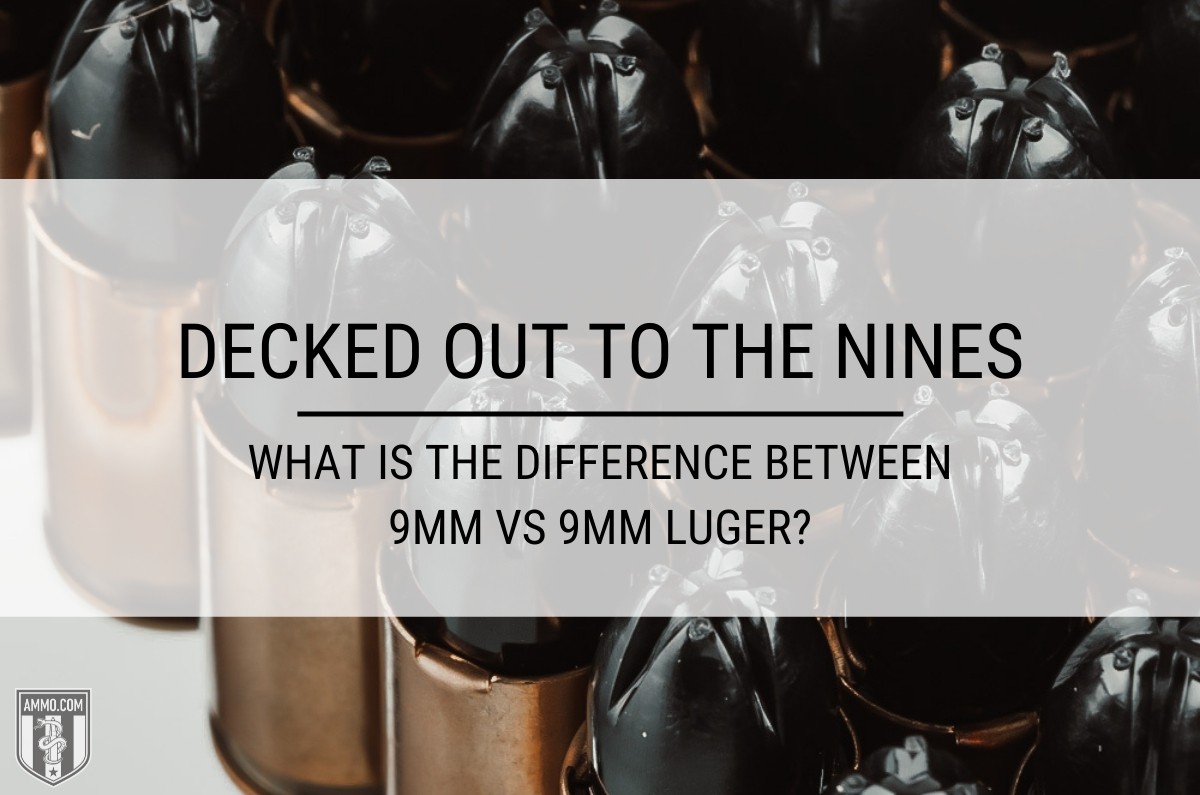 I remember the first Family Christmas I had after I got my shiny, new Gen 3 Glock 17. Like many new gun owners, I needed some fresh full metal jacket (FMJ) ammo to feed my new beloved Austrian self-defense dynamo.
I remember the first Family Christmas I had after I got my shiny, new Gen 3 Glock 17. Like many new gun owners, I needed some fresh full metal jacket (FMJ) ammo to feed my new beloved Austrian self-defense dynamo.
At our Family Christmas, we draw names to see who buys a gift for who with a $50 price limit. The only item on my list was some Winchester white box 9mm ammo, as it was well below statutes of Christmas limitations.
Unbeknownst to me, my Uncle Jerry drew my name. On Christmas, I anxiously awaited the moment when I could rip open my brand-new box of 115 grain, 1100 fps happiness that surely awaited me.
I was not disappointed as the lovely white box of ammo-induced joy awaited me, but Uncle Jerry said something that stuck with me…
“They only had 9mm Luger, I know you asked for 9mm ammo, I hope that’s what you wanted!”
Uncle Jerry is not alone, as many new 9mm handgun shooters have stumbled upon a similar quandary when it comes to ammo nomenclature.
What is the difference between 9mm and 9mm Luger?
Absolutely Nothing! They are exactly the same.
But this begs the question, why are there two different (actually, there are more) names for the same handgun cartridge?
To understand how we got to where we are now with the 9mm Luger, we need to take a look at it’s origins back at the turn of the 20th Century.
A Brief History of the 9mm Parabellum: Si Vis Pacem, Para Bellum
The 9x19mm Parabellum was designed by the Austrian gunsmith Georg Luger in 1901. Luger fashioned the 9mm Parabellum from his previous design, the 7.65x21mm Parabellum. The 9mm Parabellum is a rimless, tapered cartridge that fires a 0.355” diameter bullet (9.01mm) and has a 19.15mm case length.
During the development of the 9x19mm, Georg Luger was working at the German arms manufacturer Deutsche Waffen-und Munitionsfabriken (DWM). Over the factory gate was the company’s motto written in Latin: Si Vis Pacem, Para Bellum. The literal translation reads “If you seek peace, prepare for war”.
Once approved by DWM, the 9x19mm cartridge was monikered the 9mm Parabellum in reference to the last two Latin words of the DWM company motto.
Georg Luger also developed the P08 Luger pistol to fire his new standard 9mm round. The P08 Luger pistol was the standard issue sidearm for the German military from 1904 to 1945 and saw heavy use in both World Wars.
In 1903 Georg Luger presented the 9mm Luger cartridge to the US military for consideration at the Springfield Arsenal and was in competition with the “Dream Team” of John Moses Browning, Colt, and the 45 ACP. The 9x19mm was not adopted by the US military until much later and was instead picked up by the German Imperial Navy and Army in 1904 and 1908, respectively.
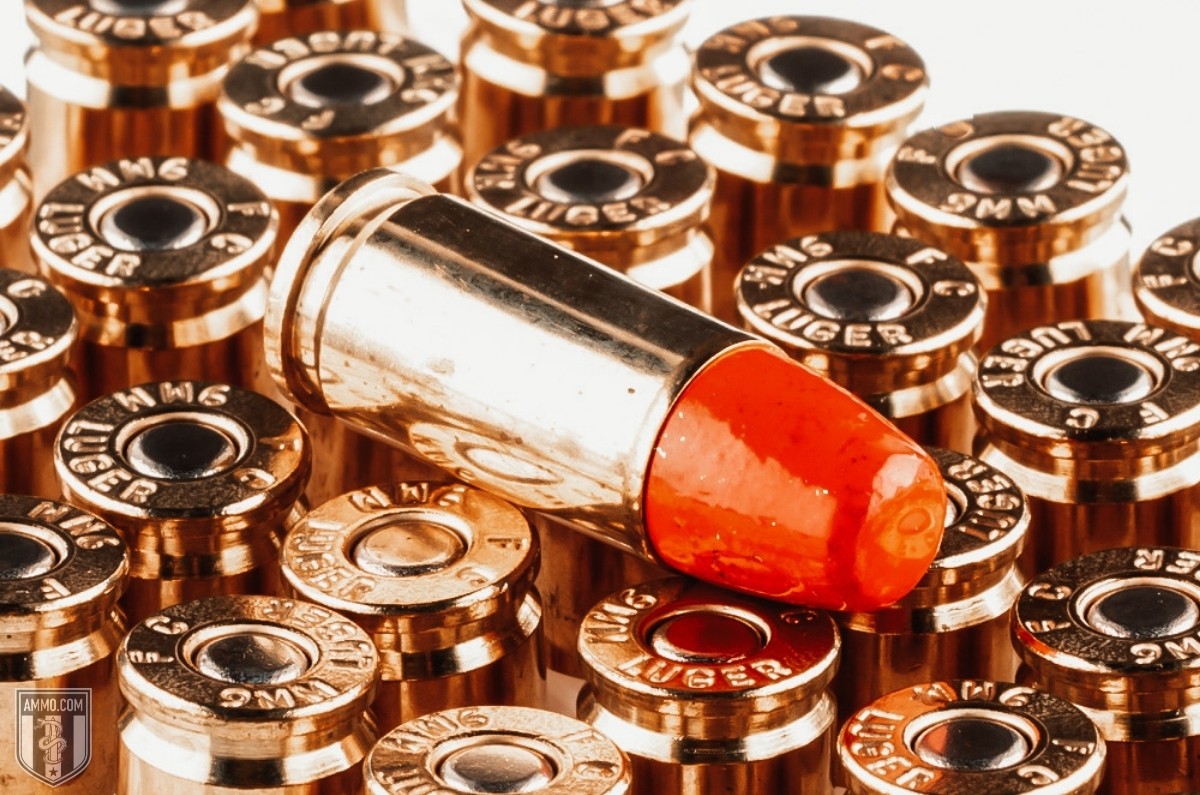
SAAMI specs list the maximum pressure for 9x19mm at 35,000 psi and standard 115 grain FMJ ammo will have an average muzzle velocity of 1180 fps and a muzzle energy of 355 foot-pounds.
After World War I and through World War II, the 9mm Luger cartridge and its accompanying Luger P-08 handgun became one of the most popular handgun cartridges in Europe for both military and law enforcement. However, the United States was late to the party as it clung to the idiom, “Bigger Bullets are Better” and our beloved 45 ACP until the 1980’s with the adoption of the Beretta M9 Service Pistol by the US Army.
The popularity of the 9mm Luger really exploded in the United States during the 80’s and 90’s with the introduction of extremely reliable semi-auto pistols, such as the Glock 19, the Sig Sauer P226, and more recently the Springfield XD and the Smith and Wesson M&P.
Fervor for the 9mm has only been bolstered by the U.S. military’s adoption of the Sig Sauer P320 as the new standard issue sidearm for military personnel.
The 9mm has become synonymous with law enforcement and home defense for its high magazine capacity, stopping power using jacketed hollow point ammo (JHP), and low overall cost per round.
9mm pistols are extremely easy to come by and are relatively inexpensive as all major firearms manufactures carry some offering for the 9mm cartridge: Glock, Smith and Wesson, Sig Sauer, Kimber, Springfield, Remington, Ruger, and Taurus, just to name a few!
It has truly become the everyday carry (EDC) handgun of choice if you don’t want to carry something chunky like a 45 ACP. And with advancements in JHP technology, the 9mm Luger has solidified itself as the self-defense ammo of choice for the military, law enforcement, and the civilian concealed carry permit holder.
The 9mm Luger: One Cartridge, Many Names
To the keen-eyed observer, you’ll have noticed that I’ve been using several different names for the 9mm cartridge.
- 9x19mm Parabellum
- 9mm Luger
- 9x19mm
- 9mm
Is there any difference between these cartridge names?
No, they are the same
So why is it that we have multiple names for the same standard 9mm cartridge?
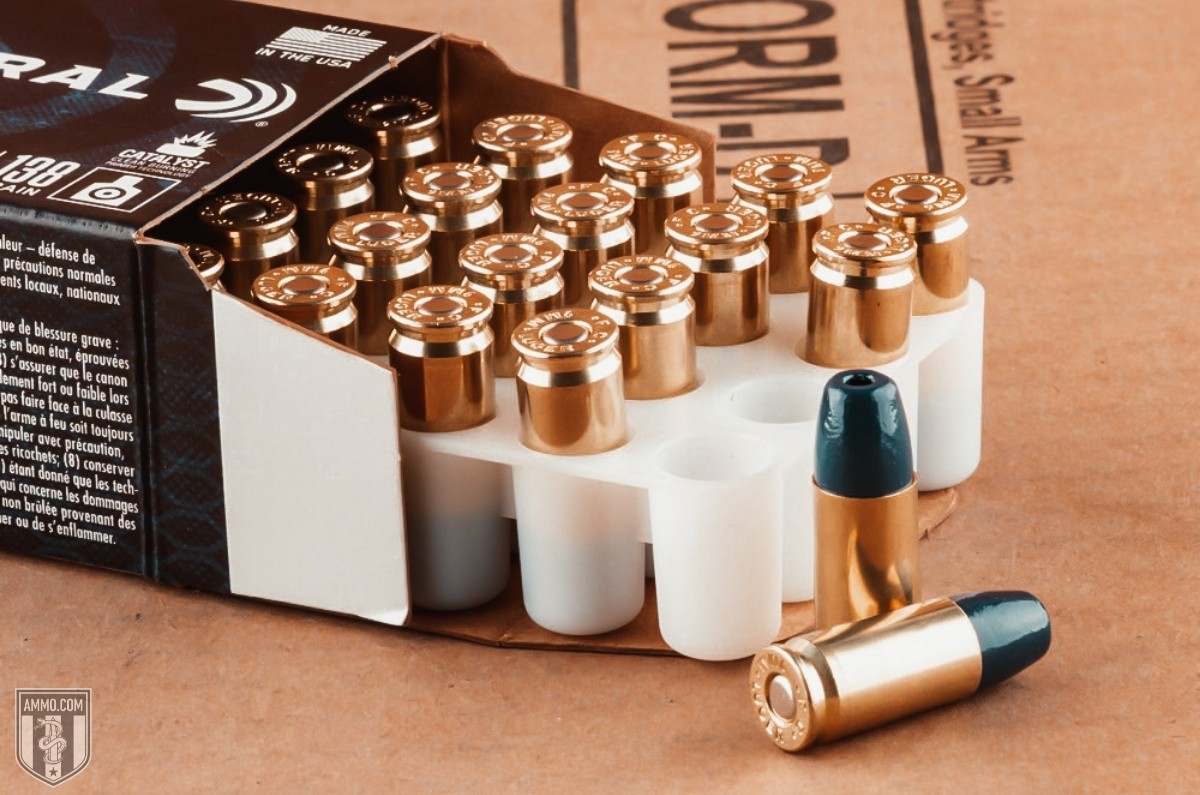
There are several reasons why a cartridge might don several names during its lifetime, one being manufacturers and the other being the regulatory organizations for ammo (namely SAAMI and the CIP).
In the case of the 9mm Parabellum, it is primarily SAAMI and the CIP that are the cause for the differences in naming for the most popular handgun cartridge in the world.
The Sporting Arms and Ammunition Manufacturers' Institute (SAAMI) is a non-government organization of ammo manufacturers in the United States that is responsible for standardizing ammunition production specifications. The Commission Internationale Permanente, or CIP for short, is the European version of SAAMI.
The issue is that often, SAAMI and CIP have different names for the same cartridge.
The CIP has the 9x19mm Parabellum as the name for Gerog Luger’s famous cartridge in their database. However, SAAMI will not list a cartridge that has its name as a registered trademark to avoid any infringement lawsuits.
Therefore, the SAAMI registration is listed as the 9mm Luger in honor of its creator to avoid any trademark issues with the name 9x19mm Parabellum.
What are the Variants of 9mm Ammo?
Although the 9mm Luger is a very versatile round, there are many variants on the cartridge that shooters need to be aware of when purchasing 9mm ammo.
For more ammo options, keep in mind to check out our inventory of Remington 9mm ammo, PMC 9mm ammo and Fiocchi 9mm ammo.
Let’s take a look at all the variants of ammo that fire the same bullet diameter that identify as 9mm.
9mm vs 9mm +P
If you spot a box of ammo labeled as “9mm +P” this means that it is a higher pressure load, not to the levels of magnum cartridges, but hotter none the less. To obtain the ubiquitous 9mm +P rating, a cartridge is simply loaded with more gunpowder to increase the overall pressure and FPS achieved by the round.
SAAMI specifications stipulate that the maximum pressure for standard 9mm ammo is 35,000 psi, whereas 9mm +P ammo is rated for a maximum chamber pressure of 38,5000 psi (10% higher).
9mm +P ammo is often touted by many gun owners as an ideal choice for self-defense as it is rated for higher pressure and this, in turn, improves terminal ballistics for the round. And they are correct in asserting this as 9mm +P JHP ammo often rates very highly in FBI ballistic gel testing.
However, not all 9mm handguns are rated to handle +P ammo. It is best to reference your handgun owner’s manual or manufacturer’s website to determine if your handgun is rated for 9mm +P rounds.
Ammo that is loaded even hotter than +P is designated as +P+, however, SAAMI does not have a specification for 9mm +P+ ammo.
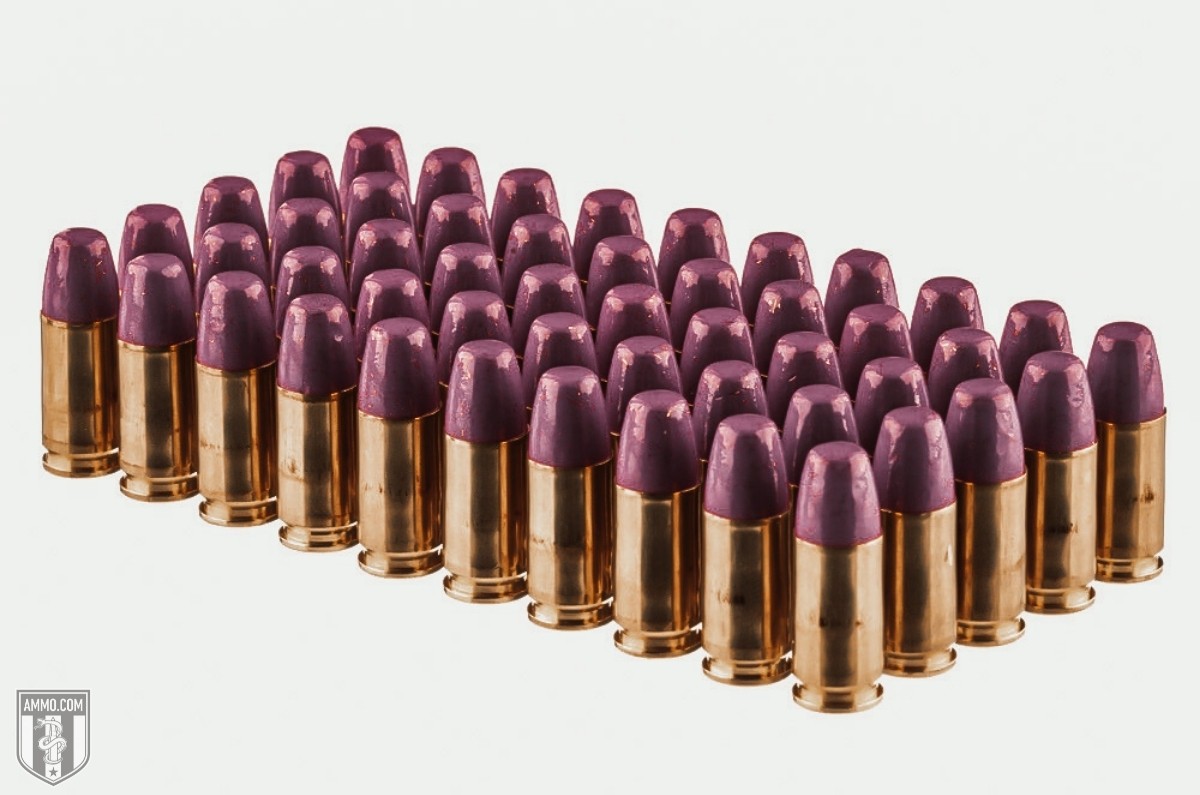
9mm vs 9mm NATO
Many new shooters may be under the impression that 9mm Luger is the same as 9mm NATO, and this is not the case.
Sure, the two cartridges have the same case length, rim diameter and fire the same 9mm bullet.
However, CIP specifications dictate a maximum chamber pressure of 36,500 psi for 9mm NATO. NATO requirements state that 9mm NATO ammo should be loaded with a bullet weight between 108 to 128 grains.
Standard military-issue 124 grain bullet weight 9mm NATO ammo will have a muzzle velocity of 1200 fps and muzzle energy of around 400 ft-lbs. In comparison, standard 9mm ammo firing a 124-grain bullet will exit the muzzle around 100 fps slower with about 50 ft-lbs less energy.
The higher pressure allowance lets the 9mm NATO round penetrate a bit deeper and improves its terminal ballistics.
If your handgun is rated to handle 9mm +P ammo then you will have no problem firing 9mm NATO through it.
However, if you own an older P08 Luger handgun or something older, I would NOT recommend firing 9mm NATO through it as it was not designed to handle the higher pressure of the NATO round.
Any modern firearm produced within the last 40 years should not have any issue handling 9mm NATO.
Other 9mm Variants: A 9mm in Name Only
The previous section dealt with variants of 9mm Luger, however there are cartridges that bear the 9mm name but are not actually 9mm Luger.
Let’s examine other variants you’ll encounter in the wild, or across the gun store counter.
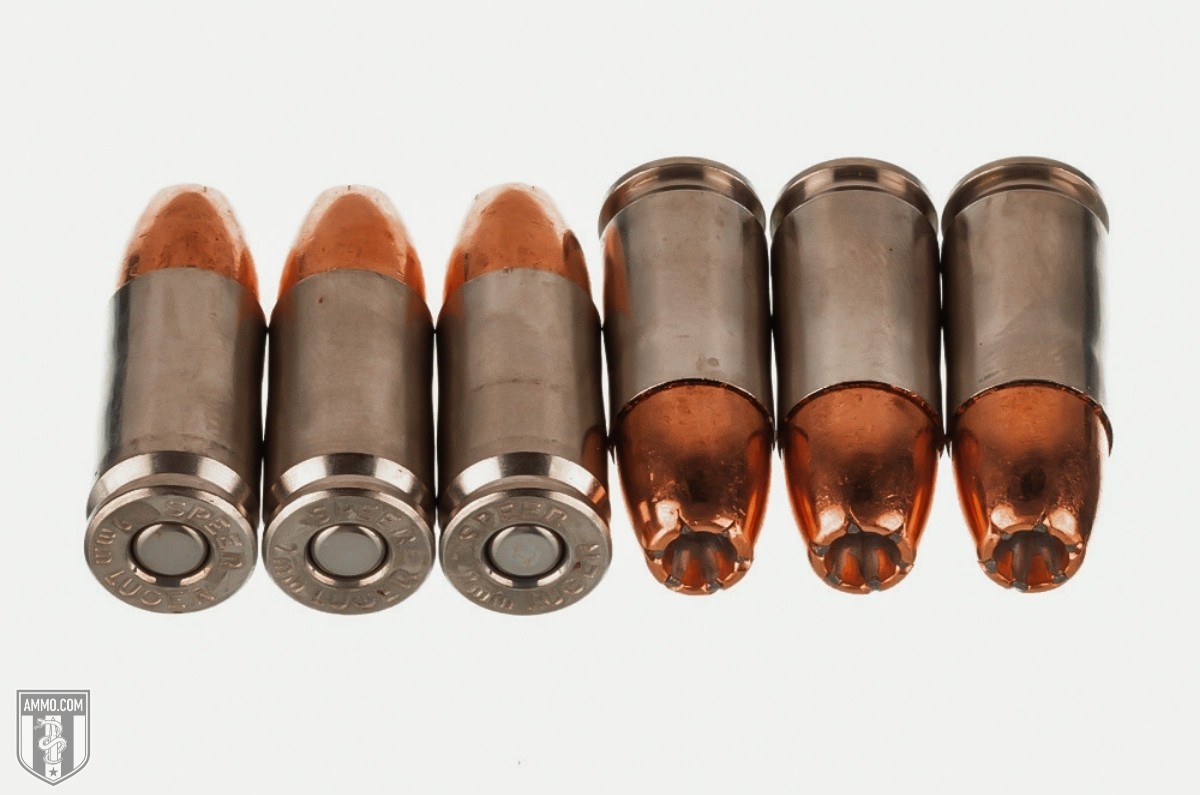
9mm vs 9mm Browning
The 9mm Browning was developed in 1908 by the American firearm genius, John Moses Browning and marketed by Colt. However, it is more commonly known as the 380 ACP.
The 380 ACP is also referred to as the 380 Auto, the 9mm Short, and is recognized by the CIP as the 9mm Browning Court.
The 9mm Short is a rimless cartridge and has case dimensions of 9x17mm. Although never a huge military success, the 380 ACP became more popular with European police departments after WWII.
Perhaps the most famous 380 Auto handgun is the Walther PPK, the trusty sidearm of MI6’s top-secret agent, James Bond.
9mm vs 9x18mm Makarov
The 9x18mm Makarov is the Russian’s response to the 9mm Luger and is also called the 9x18mm PN and bears the designation 9mm Makarov by the CIP.
The 9x18mm Makarov is a rimless cartridge that was based off of the 9x18 Ultra cartridge (more on that below).
Although it bears the name “9mm”, the 9x18mm Makarov does not fire a 9mm bullet. Instead, it fires a 0.365” (9.27mm) bullet diameter round. Standard 9x18mm Makarov ammo is loaded with a 95-grain bullet, which is a lower bullet weight than most all 9mm Luger ammo.
From a ballistics standpoint, the 9x18mm Makarov is inferior to the 9x19mm Luger, and although there are no official SAAMI specs for the 9mm Makarov, many tests indicate that most Russian Makarov ammo is loaded to about 20,000 psi (15,000 psi less than 9mm Luger).
A Reloading Side Note on 9x18mm Makarov – As a 9mm Luger reloading enthusiast, the 9x18mm Makarov is the bane of my existence. I cannot express my disdain for finding 9x18mm brass mixed in with my 9mm Luger. As 9mm Makarov (and 380 ACP for that matter) has the same rim diameter as 9mm Luger, it easily fits into the shell holder for 9mm Luger.
As such, it is incredibly important that you visually inspect all your brass (especially if it is range pickup) before you begin reloading for 9mm Luger to cull any 9mm Makarov or 380 ACP interlopers.

9mm vs 9x18mm Ultra
Although the 9x18mm Ultra was developed in 1936, it lived in relative obscurity until the 1970s when Walther introduced their PP Super handgun chambered in 9x18mm Ultra for the West German Police.
Sig Sauer followed suit, releasing the Sig Sauer P230 in 9x18mm Ultra which saw limited police use. However, once Walther ceased production of the PP Super in 1979, the craze for the cartridge all but died off completely.
9mm vs 9x21mm
The 9x21mm never really caught on in popularity in the US as it is essentially a 9mm Luger with 2mm extra case length.
The Italian ammo manufacturer Jaeger developed the round for countries that made it illegal for civilians to own military cartridges.
The 9x21mm cartridge allows for 9mm bullets to be seated to the same overall length as 9mm Luger, allowing it to fit into standard 9mm magazines.
9mm vs 357 SIG
Developed in 1994 in a joint operation between Federal Cartridge and Sig Sauer, the 357 SIG is essentially a 10mm Auto case necked down to accept a 9mm bullet diameter. The 357 SIG was designed to replicate the terminal ballistics of the famed 125-grain JHP 357 Magnum revolver cartridge.
Although the 357 SIG was adopted by several high-profile law enforcement agencies (Texas Rangers, Air Marshals, Secret Service), it did not find the same success of the 9mm Luger due to the 357 SIG’s increased recoil, increased firearm wear and tear, and double overall price per round compared to 9mm.
Speaking of overall price per round, buying in bulk is always smart! Make sure to check out our stock of bulk 9mm ammo.
For more options, don't forget to check out our stock of Hornady 9mm ammo.
Final Thoughts on 9mm vs 9mm Luger
So, what is the difference between 9x19mm Parabellum, 9mm Luger, and 9mm?
Absolutely nothing!
They are identical and different in name only.
Despite what name these rounds carry, when you hear someone refer to a 9mm, they are most likely referring to a 9mm Luger or 9x19mm Parabellum which are one and the same cartridge.
It is every shooters’ responsibility to know what your handgun is chambered in and ensure that you are loading the correct ammo into your magazines. When in doubt, check the caliber stamp on the barrel, and if you are still confused, seek the services of a qualified gunsmith.
Ammo Comparisons
- .308 vs 5.56
- 6.5 Creedmoor vs .308
- .300 Blackout vs .308
- .300 Win Mag vs .308
- .243 vs .308
- .308 vs .30-06
- 7mm-08 vs .308
- .270 vs .308
- 7.62x39 vs .308
- .223 vs .308
- .338 Lapua vs .308
- .380 ACP vs 9mm
- .223 vs 5.56
- .300 Blackout vs 5.56
- 9mm vs 45 ACP
- 9mm vs 40 S&W
- .357 SIG vs 9mm
- 10mm vs 9mm
- 9mm vs 9mm Luger
- .243 vs .270
- .300 Win Mag vs .30-06
- .270 vs .30-06
- .40 vs .45
- 38 Special vs 357
- 9mm vs 40 vs 45
- 5.56 vs 7.62x39
- 338 Lapua vs .30-06
- .30-30 vs .30-06
- 300 PRC vs 338 Lapua
- .30-06 vs 7mm
- 300 Win Mag vs 338 Lapua
- 300 PRC vs 300 Win Mag
- 300 WSM vs 300 Win Mag
- 338 Win Mag vs 338 Lapua
- 12 Gauge vs 20 Gauge
- 10mm vs 357 Mag
- .30-30 vs 7.62x39
- 224 Valkyrie vs 22-250
- 17 HMR vs 22 Mag
- 7.62x39 vs .300 Blackout
- 45 ACP vs 45 Auto
- 45-70 vs 30-30
- 300 Blackout vs 223
- 357 Magnum vs 9mm
- 350 Legend vs 300 Blackout
- 224 Valkyrie vs 223
- 45 ACP vs 38 Super
- 6.5 Grendel vs .308
- 17 HMR vs 22 LR
- 10 Gauge vs 12 Gauge
- 22-250 vs 223
- 45 Colt vs 45 ACP
- 350 Legend vs 30-30
- 5.7x28 vs 223
- 5.7 vs 9mm
- 5.56 vs 5.7
- 22 vs 9mm
- Buckshot vs Birdshot
- 450 Bushmaster vs 308
- 450 Bushmaster vs 223
- Buckshot vs Slug
- 6.5 Grendel vs 5.56 vs 223
- 6mm ARC vs 6.5 Grendel
- 44 vs 45
- 458 SOCOM vs 5.56
- 357 vs 44
- 32 ACP vs 380
- 300 Win Mag vs 338 Win Mag vs 338 Lapua Mag
- 450 Bushmaster vs 458 SOCOM vs 50 Beowulf
- 6mm Creedmoor vs 6.5 Creedmoor
- TMJ vs FMJ
- 44 Special Vs 44 Magnum
- 45 90 vs 45 70
- 6.8 Western vs 6.8 SPC
- 50 Beowulf vs 50 BMG
- 26 Nosler vs 6.5 PRC
- 28 Gauge vs 410
- 6.8 SPC vs 5.56
- 6.8 SPC vs 6.5 Grendel
- 6.8 Western vs 7mm Rem Mag vs .28 Nosler
- 6.8 Western vs 6.5 Creedmoor
- 22 Hornet vs 223
- 6.8 Western vs 6.5 PRC
- .410 vs 12 Gauge
- .410 vs 20 Gauge
- 22 LR vs 22 Mag
- 6mm ARC vs 243
- 7mm-08 vs 270
- 243 vs 6.5 Creedmoor
- Nickel vs Brass Casing
- 204 Ruger vs 223
- 50 Beowulf vs 5.56
- 260 Remington vs 6.5 Creedmoor
- 6mm Remington vs 243
- 28 Nosler vs 300 PRC
- 50 Beowulf vs 50 AE
- 22 Nosler vs 22-250
- 450 Marlin vs 45-70
- 300 Win Mag vs 300 Norma
- 458 SOCOM vs 300 Blackout
- 38-55 vs 45-70
- 22 Hornet vs 22 LR
- 300 Norma vs 338 Lapua
- 338 Lapua vs 50 BMG
- 28 Nosler vs 300 Win Mag
- 28 Nosler vs 6.5 Creedmoor
- 204 vs 22-250
- 458 SOCOM vs 45 70
- 44 40 vs 45 70
- 6.8 SPC vs 6.5 Creedmoor
- 450 Bushmaster vs 30-06
- 7mm Rem Mag vs 300 Win Mag
- 30 Carbine vs 223
- 25-06 vs 30-06
- 26 Nosler vs 28 Nosler
- 16ga vs 12ga
- 30 06 vs 7.62 x54R
- 9mm Makarov vs 9mm Luger
- 350 Legend vs 223
- 30 Carbine vs 5.56
- 6.5x55 vs 6.5 Creedmoor
- 6.5 Creedmoor vs 270 vs 25-06
- M193 vs M855
- 450 Bushmaster vs 458 SOCOM
- 6.5 Grendel vs 6.5 Creedmoor
- 350 Legend vs 5.56
- .277 Fury vs 6.8 SPC
- 277 Fury vs 300 Win Mag
- 10mm vs .45 ACP
- 277 Fury vs 223
- 6.8 SPC vs 300 Blackout
- 6.5 PRC vs 6.5 Creedmoor
- 277 Fury vs 308
- 277 Fury vs 6.5 Creedmoor
- 350 Legend vs 450 Bushmaster
- 277 Fury Vs 5.56 NATO
- 10mm vs 40S&W
- 32 ACP vs 9mm
- 32 Special vs 9mm
- 8.6 Blackout vs 300 Blackout
- 30 Super Carry vs. 9mm
- 5.56 vs 9mm
- .50 Action Express vs 9mm
- 7.62x25 vs. 9mm
- 10mm vs 44 Magnum
- 300 Blackout vs 300 Win Mag
- 6.5 Grendel vs 300 Blackout
- 460 Rowland vs 10mm
- 300 RUM vs 300 PRC
- 300 Norma vs 300 PRC
- 45 GAP vs 45 ACP
- 7mm PRC vs 300 Win Mag
- 300 PRC vs 6.5 Creedmoor
- 300 PRC vs 308
- 357 SIG vs 357 Mag
- 7.62x39 vs 7.62x51
- 243 Win vs 223 Rem
- 30 Nosler vs 300 PRC
- 6.5 Creedmoor vs. 30-06 Springfield
- 450 S&W vs. 44 Magnum
- 6.5 Creedmoor vs. 300 Win Mag
- 454 Cassull vs. 45-70 Govt
- 454 Cassull vs. 44 Mag
- 7.62x54r vs. 308 Winchester
- 22 ARC vs. 223 Rem
- Subsonic vs. Supersonic Ammo
